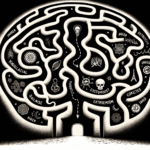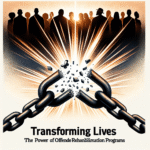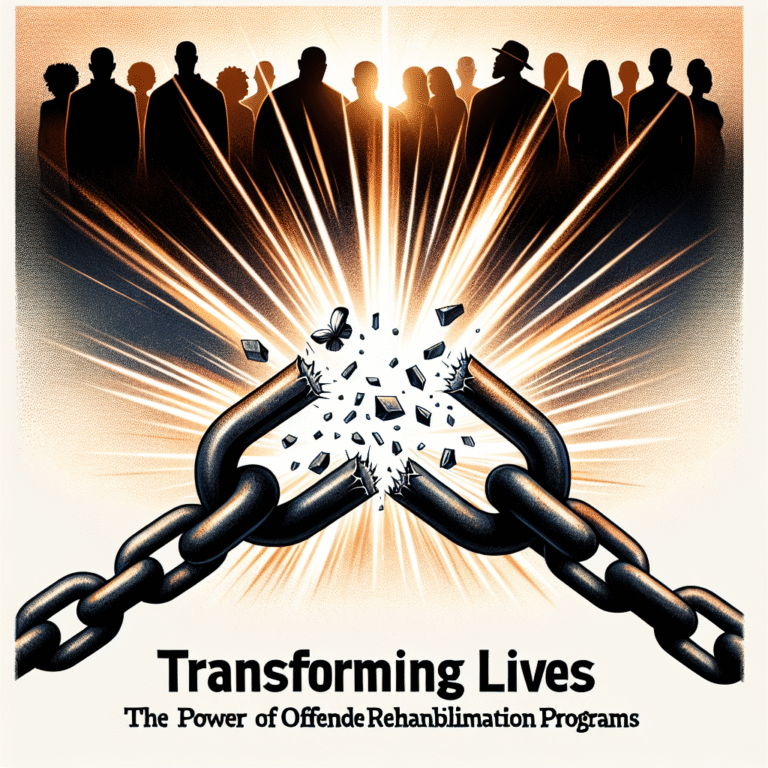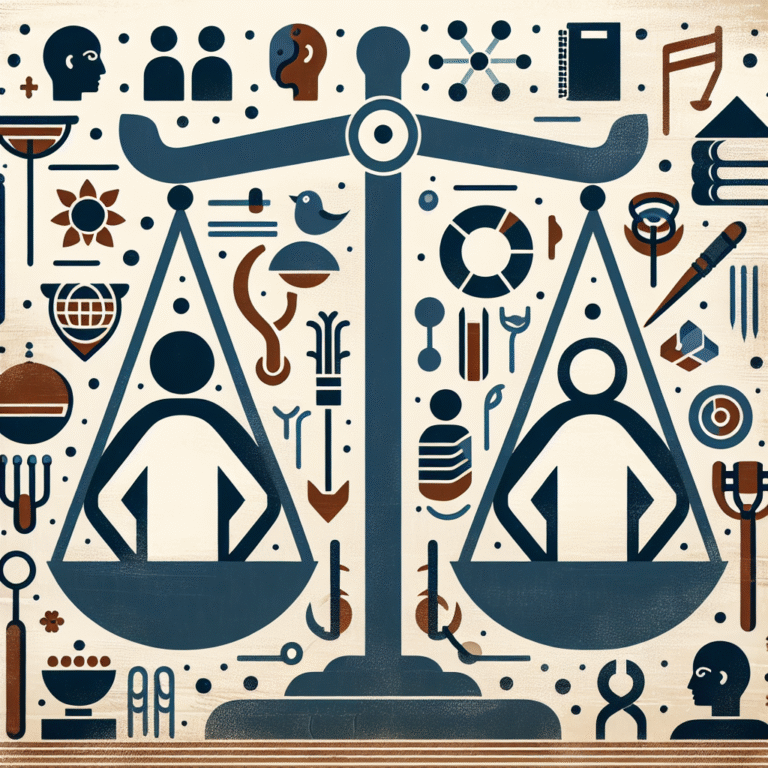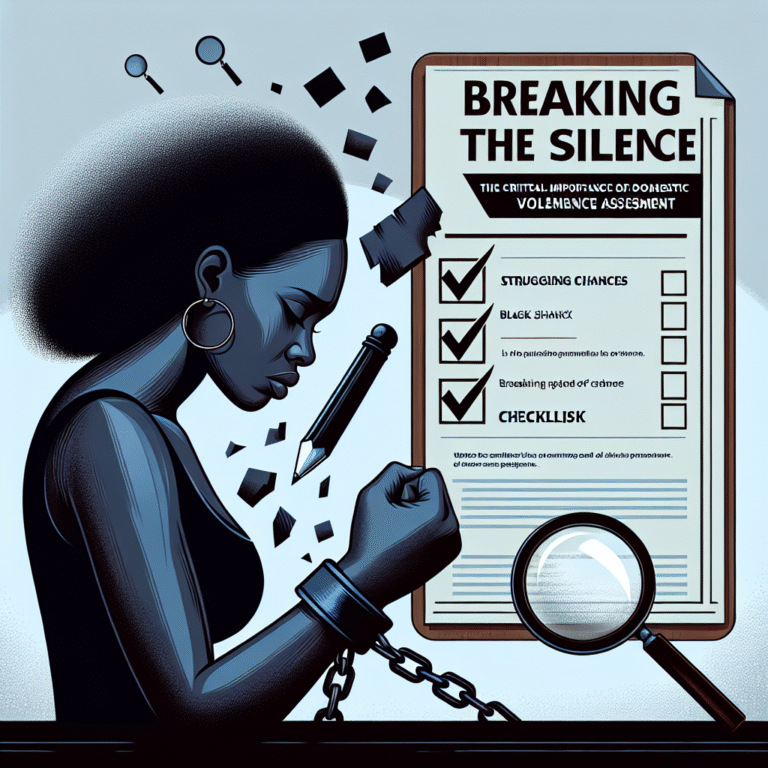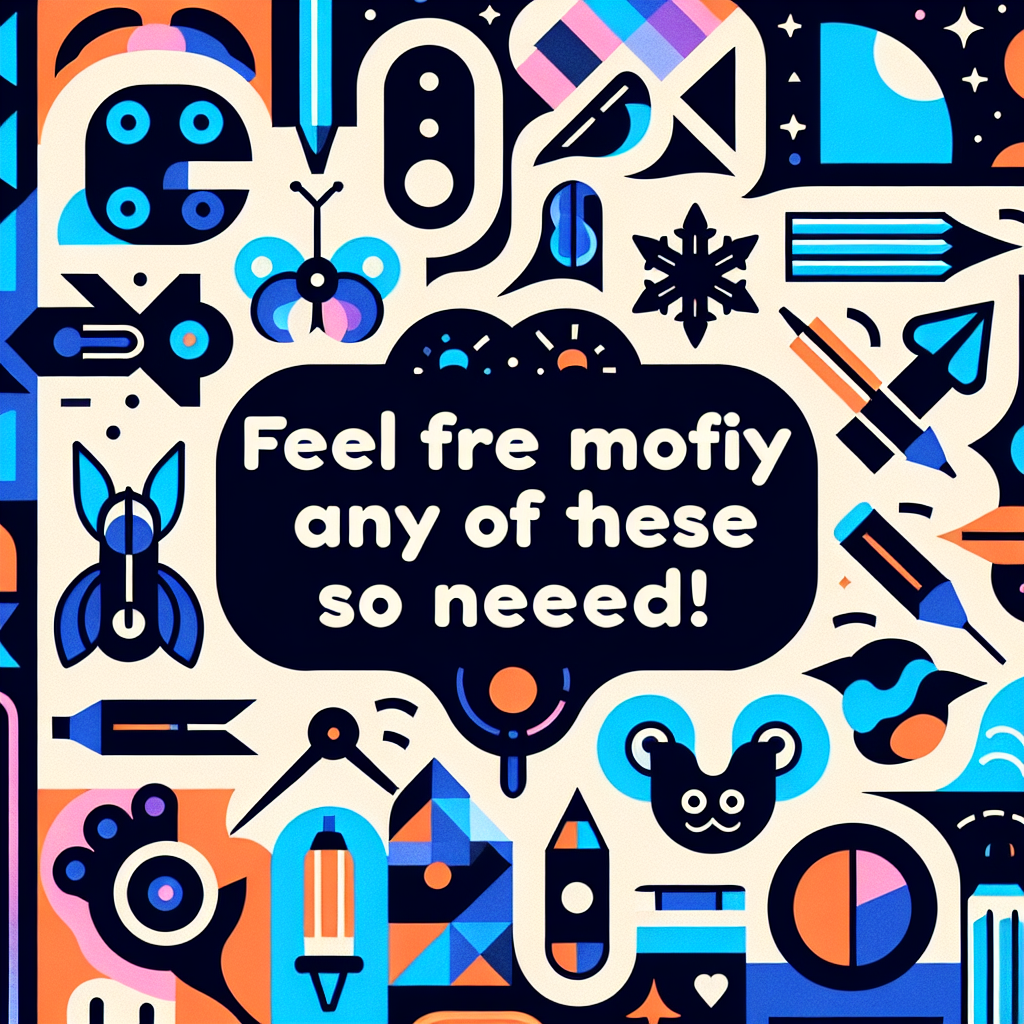
Introduction
In a world bursting with options—from clothing to technology—personalization has become more than just a trend; it’s an expectation. Whether you’re crafting a unique project at work or tailoring a presentation, the ability to say, "Feel free to modify any of these as needed!" empowers creativity and collaboration. This article delves into the significance of customization in various realms, offering insights, case studies, and practical applications that highlight why embracing flexibility is essential.
The Value of Customization
Customization is not merely about changing things around; it’s about making connections, fostering creativity, and enhancing effectiveness. So, why should one feel empowered to say, "Feel free to modify any of these as needed!"?
Enhancing Engagement
Personalization increases engagement by making individuals feel valued. For example, a study conducted by the Market Research Society found that consumers are 62% more likely to engage with tailored content rather than generic offerings. When you invite others to modify something—be it a proposal or a design—you’re not just encouraging participation; you’re cultivating investment.
Increasing Efficiency
The flexibility to modify projects or documents leads to improved outcomes. By allowing team members to adjust aspects to fit their style or objectives, the overall workflow becomes smoother. Imagine a marketing pitch where each member can customize their slides; this approach fosters creativity while ensuring that everyone is aligned with the main goals.
Real-World Applications: Case Studies
Case Study 1: Collaborative Design at Adobe
Adobe’s Creative Cloud utilizes customization extensively, allowing users to adjust templates according to personal needs. Their "Feel Free to Modify Any of These as Needed!" approach has led to increased user satisfaction and creativity.
Analysis
This real-world application demonstrates how allowing modifications enhances the end product. When users take ownership of a design, they’re more likely to feel connected to it, leading to better results and more innovative outputs.
Case Study 2: Customized Learning at Khan Academy
Khan Academy offers personalized learning experiences where educators can modify courses and materials to fit their classroom needs. Their model emphasizes that modifications lead to improved educational outcomes, as teachers can tailor lessons to match their students’ learning speeds and interests.
Analysis
This case study supports the notion that allowing educational content customization directly translates into better engagement and understanding, underlining the importance of flexibility in teaching methodologies.
Key Areas Where Customization Matters
Marketing Strategies
The digital marketing landscape thrives on customization. Brands that allow customers to modify products or services often outperform those that don’t. For example, Nike’s "Nike By You" program lets customers design their shoes, creating a personal connection that translates into brand loyalty.
Product Development
In the tech industry, companies like Apple often release customizable options for hardware and software. This approach reinforces customer satisfaction by allowing users to make modifications that suit their needs, ensuring a better fit for diverse consumer preferences.
Project Management
In project management, flexibility can lead to increased productivity. Teams stating, "Feel free to modify any of these as needed!" cultivate a culture of collaboration. Tools like Asana and Trello allow team members to adjust tasks, deadlines, and priorities based on real-time feedback.
Best Practices for Encouraging Customization
To ensure you’re getting the most out of the "Feel free to modify any of these as needed!" mindset, consider these best practices:
1. Provide Clear Guidelines
While creativity is essential, clarity is crucial. Providing foundational guidelines ensures modifications align with core goals.
2. Foster a Collaborative Environment
Encouraging team discussions around potential modifications fosters a sense of community and strengthens collective outcomes.
3. Offer Support
When modifications are made, providing feedback enhances the collaborative process. Supportive teams are often more productive and innovative.
4. Celebrate Customization Successes
Creating a culture that celebrates successful customizations encourages others to engage in the practice.
5. Continuously Evolve
Feedback should guide future modifications. Encourage regular reviews of customized elements to keep projects relevant and effective.
Customization Beyond the Workplace
While customization thrives in corporate settings, its relevance permeates various aspects of daily life.
Personalization in Education
As discussed earlier, education is a field where customization is not only beneficial but essential. Learners thrive when educational paths fit their interests and skills.
Customizing Personal Finance
Financial planning is another area where adjustments can have significant benefits. Using customized budgeting tools allows individuals to tailor financial goals to their spending habits and income levels.
Tailoring Health Solutions
In healthcare, customized treatment plans are increasingly prevalent. Healthcare providers are beginning to adopt personalized medicine approaches where treatments are tailored to fit individual genetic profiles.
Conclusion
As we’ve explored, the ability to say, "Feel free to modify any of these as needed!" is not just a tagline; it’s a philosophy that empowers creativity across multiple landscapes. Customization fosters engagement, increases efficiency, and enhances outcomes.
Whatever your field or focus, making room for modifications ensures that you remain adaptable and open to innovation. Let the spirit of customization guide you toward creating meaningful, impactful experiences—both personally and professionally.
FAQs
1. How can I encourage my team to embrace customization?
Create an open environment where feedback is welcomed. Provide examples of successful modifications and celebrate those who take the initiative to customize.
2. What tools can help streamline customization?
Consider tools like Asana, Trello, or Canva, which allow for easy modifications and collaborative inputs. They enable everyone involved to participate actively in customization efforts.
3. How do I balance customization with brand consistency?
Establish foundational guidelines that outline key brand elements while allowing room for individual creativity. This balance ensures that while modifications are made, they remain aligned with the overall brand identity.
4. Can customization improve customer satisfaction?
Absolutely! When customers feel they can customize products or services, their involvement often leads to stronger emotional connections and loyalty to your brand.
5. What are some common challenges with customization?
Some common challenges include potential misalignment with brand goals, inefficient feedback loops, and difficulties managing varying inputs. Regularly reviewing your customization processes can help mitigate these challenges.
By weaving customization into various aspects of our lives, whether in personal projects, education, or workplace dynamics, we not only enhance our outcomes but also embrace the beauty of individuality. So, don’t hesitate: feel free to modify any of these as needed!
